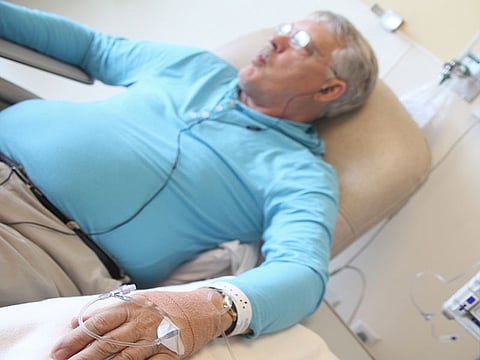THURSDAY, Jan. 7, 2016 (HealthDay News) -- Deaths from cancer continue to decline in the United States, according to a new report from the American Cancer Society.
Since peaking in 1991, cancer death rates have dropped by 23 percent, the ACS said in the report released Thursday.
"Cancer death rates are continuing to decline by about 1.5 percent per year," said study author Rebecca Siegel, strategic director for surveillance information services for the American Cancer Society. The 23 percent drop in death rates occurred from 1991 through 2012, she said, and that translates to more than 1.7 million cancer deaths averted.
"We are doing very well, I would say, is the bottom line," she said.
The findings are included in Cancer Statistics, 2016, the American Cancer Society's latest annual report on cancer incidence, mortality and survival. The report was published online Jan. 7 in CA: A Cancer Journal for Clinicians.
The data was collected from the U.S. National Cancer Institute's Surveillance, Epidemiology and End Results (SEER) program and other sources. Over the past decade, the rate of cancer deaths has dropped by 1.8 percent a year in men and 1.4 percent in women, according to the report. The decline in the past 20 years has been driven by the continuous drop in deaths for four major cancer types: breast, colon, lung and prostate, the report noted.
For 2016, the ACS estimates that there will be about 1.6 million new cancer cases and nearly 600,000 deaths in the United States.
Despite the progress, death rates for certain cancers are increasing, Siegel and her colleagues found. These include cancers of the liver, pancreas and uterus. Thyroid cancers are the most rapidly rising, increasing more than 5 percent yearly in both men and women, the research revealed. However, some of that increase stems from overdiagnosis due to advanced imaging techniques, the experts said.
The decline in cancer deaths is due to early detection and treatment advances, along with fewer people smoking, Siegel said.
Dr. Steven Rosen is director of the City of Hope Comprehensive Cancer Center and Beckman Research Institute in Duarte, Calif. While saying "there was nothing surprising" in the new report, he added that "we should be very proud of all our accomplishments."
However, he said, more work needs to be done. For instance, obesity, which is linked with many cancers, must be addressed, he said.
"It's felt that obesity will replace tobacco as the number one cause of cancer. We have to be diligent," Rosen cautioned.
Among the cancers that may be linked to obesity are breast, colon, endometrial, esophagus, gallbladder, kidney, pancreas, prostate and thyroid, he said.
Siegel agreed that obesity must be addressed head-on as a cancer risk factor. "For many of the cancers that are increasing, it's related to obesity," she said. The link between obesity and cancer is not well-known by many people, she added.
Smoking rates must also decline further, Siegel said. "We still have 17 percent of Americans who are smoking."
Rosen offered some final advice on cancer prevention.
"Eat a healthy diet, exercise, try to be as close as possible to your ideal body weight. Don't smoke, drink in moderation, and minimize sun exposure," he advised.
More information
To learn more about cancer prevention, visit the American Cancer Society.


